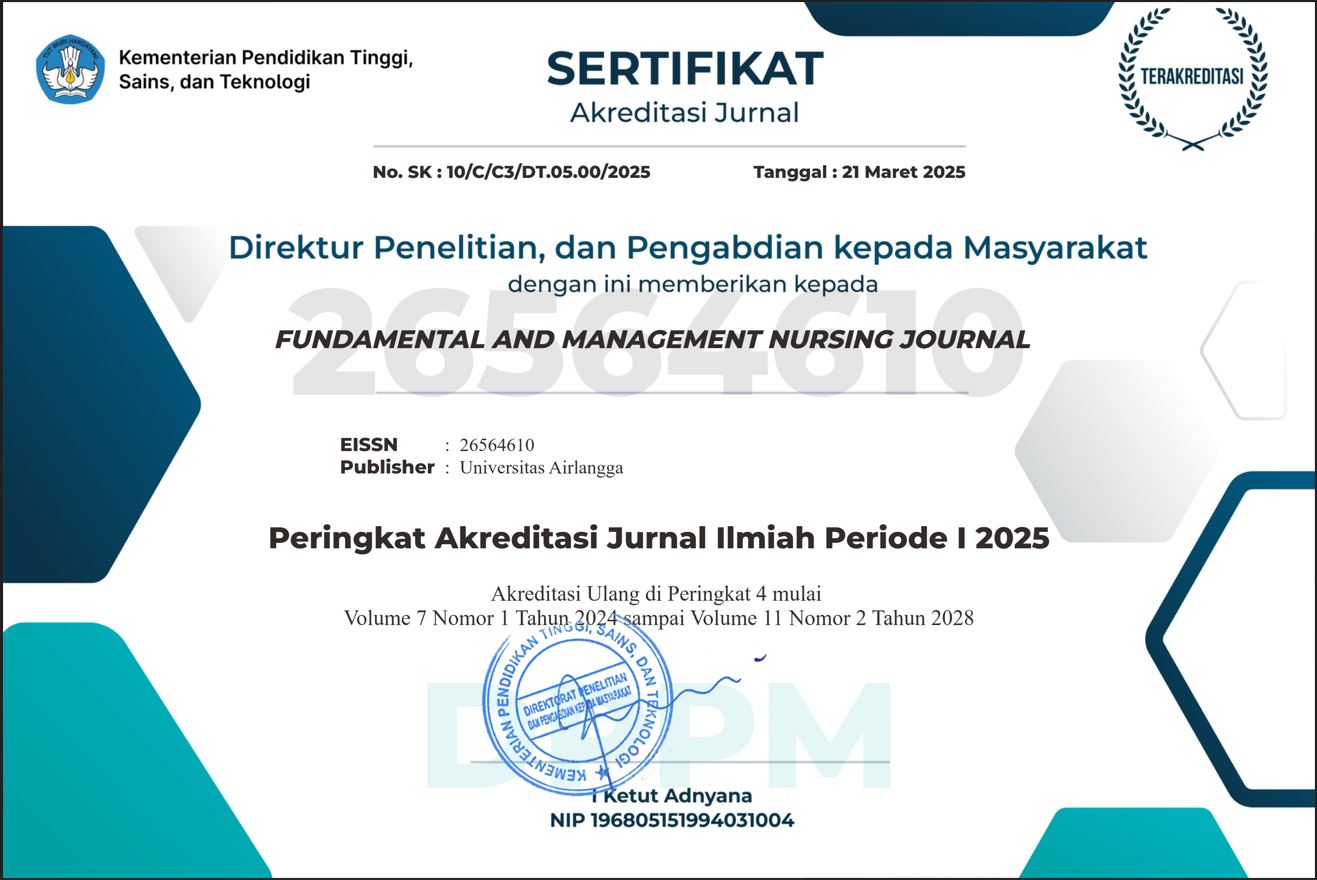Effectiveness of Health Education Role Play Method and Audio-Visual Methods of Skills First Aid Syncope Among Senior High-School Students
Introduction: Delays and errors in providing first aid to victims experiencing syncope can significantly increase the risk of complications and even mortality. Syncope requires immediate, appropriate intervention, making first aid skills essential for students. This study aimed to compare the effectiveness of the roleplay method and the audiovisual method in improving students’ skills in providing first aid for syncope.
Method: This study employed a quasi-experimental design with a nonequivalent group posttest-only approach. The population consisted of all 442 students in Class X at SMAN 1 Kedungwaru, Tulungagung, Indonesia. Using purposive sampling with specific inclusion and exclusion criteria, 71 students were recruited. Participants were divided into two groups: the roleplay group (n = 35, Class X-1) and the audiovisual group (n = 36, Class X-2). The independent variable was the health education method, while the dependent variable was the level of syncope first aid skills. Data were collected using an observation checklist, with a Content Validity Index (CVI) of 0.86, confirming its validity. Data analysis was performed using the Mann–Whitney U test.
Results: The demographic characteristics showed comparable distributions between groups. In the roleplay group, 49% (n = 17) of students demonstrated good skills, whereas in the audiovisual group, the majority 47% (n = 17) achieved only moderate skill levels. The Mann–Whitney test yielded a p-value of 0.001 (< 0.05), indicating a significant difference between the two methods.
Conclusion: Roleplay is more effective than audiovisual because respondents have the opportunity to practice directly so they learn and see more clearly.
1. INTRODUCTION
Syncope, characterized by a temporary loss of consciousness, is a common occurrence among students. It is often experienced during physical activities, such as flag ceremonies or sports events. Several factors, including fatigue, exposure to direct sunlight, dehydration, and standing for prolonged periods, can cause syncope by leading to insufficient blood flow to the brain(Arifin et al., 2024)(Kurniati, 2015). Although syncope is commonly observed among younger populations, it can also occur in adults, especially as age increases(Sutejo & Sulistiyawati, 2019).
According to the World Health Organization (WHO), the incidence of syncope is highest in the 15–19-year age group, and its prevalence may increase with age. The global prevalence of syncope is reported to be 34%(Williams et al., 2018). A study in England found that the average treatment period for syncope was 61 days. Additionally, research by(Kundre Ns, 2018)identified that the highest prevalence of syncope occurs among individuals aged 15–44 years, with a rate of 44.8%.
In Indonesia, data from the Ministry of Health (2018) revealed that 35% of students experience syncope while engaged in school activities(Yunus et al., 2022). Specifically, in East Java, 9% of students reported experiencing syncope during school activities, and a similar trend was noted in 2017, when 10% of students fainted during activities such as flag ceremonies(Jatim, 2018). For instance, in Tulungagung Regency in 2018, at least 20 students collapsed during the National Education Day ceremony, due to factors such as extreme heat, fatigue, and dehydration, further exacerbated by a delayed ceremony(Maryati, 2018).
Syncope, commonly referred to as fainting, is a sudden and transient loss of consciousness caused by inadequate cerebral perfusion(Williams et al., 2018). The condition presents with a spectrum of manifestations, beginning with prodromal or mild symptoms such as fatigue, dizziness, blurred vision, nausea, and cold sweats, and progressing in some cases to more severe complications such as cardiovascular disturbances, prolonged unconsciousness, or recurrent episodes(Kurniati, 2015). In the most critical scenarios, syncope can be life-threatening, particularly if blood flow to the brainstem is severely compromised, which may result in cardiorespiratory arrest and sudden death. Beyond the immediate health risks, syncope episodes in children and adolescents occurring within the school environment casn also trigger panic, injury from falls, and significant psychological distress for peers and educators.
The Role-Playing Method is a teaching technique that emphasizes interactive learning, where participants demonstrate their knowledge and skills directly. This method is highly effective because it increases engagement and allows students to understand the material more deeply(Yuliastuti, 2018). However, this method can be time-consuming and requires significant preparation. On the other hand, the Audio-Visual Method uses multimedia elements-visual and auditory stimuli-to facilitate learning, providing a comprehensive, engaging, and multisensory educational experience. Due to lack the handson, practical application of skills offered by roleplaying, the Audio-Visual Method is very effective in conveying information(Wirabumi, 2018).
Integrating syncope education into school health programs aligns with broader goals of preventive care and health promotion(Yuliastuti, 2018). By strengthening the capacity of teachers and students to respond effectively, schools can significantly reduce the risks of delayed intervention, minimize potential complications, and improve the overall outcomes for individuals who experience syncope. Ultimately, such preparedness underscores the importance of collaboration between healthcare providers, educators, and families in creating safe learning environments that prioritise both the physical well-being and the psychosocial resilience of students. Therefore, this research will reveal which method is more effective or has a greater impact on student skills.
Given the high prevalence of syncope in high school and its potentially dangerous risks, we conducted this study to compare the effectiveness of Role-Playing and Audio-Visual Methods in improving first aid skills for handling syncope in Class X MIA students at public senior high school (in Indonesia, it is commonly called SMAN) 1 Kedungwaru, Tulungagung, Indonesia. This study aims to contribute to improving students' ability to handle syncope emergencies by providing health education that combines theoretical knowledge and practical skills. This minimizes the risk of worse outcomes if syncope is treated immediately.
2. METHODS
2.1 Research Design
The research design used in this study is a quasi-experimental design with a Nonequivalent Group Posttest-Only Comparison Group Design(Sugiyono, 2018). This design is chosen because it allows for comparing the effectiveness of two different health education methods (Roleplay and Audio-Visual) on syncope first aid skills in students. The study involves two experimental groups: one group receives health education using the Roleplay Method, while the second group receives the same health education content through the Audio-Visual Method. After the treatment, a post-test is conducted to assess the skills of the students in providing syncope first aid. The material taught is the same for both groups, with the only difference being the method of delivery.
2.2 Population, Sample and Sampling
The population for this study consists of all Class X students at SMAN 1 Kedungwaru in Tulungagung, Indonesia, totalling 442 students across 12 classes. Due to logistical constraints and the nature of the research, purposive sampling was employed. Purposive sampling is chosen because it allows the researcher to select specific classes that meet predefined criteria (such as their willingness to participate, availability, and relevance to the study). This method ensures that the sample is representative of the population relevant to the research objectives, even though it may not be fully random.
The sample
Copyright (c) 2025 Berlian Yuli Saputri, Aesthetica Islamy, Anis Murniati

This work is licensed under a Creative Commons Attribution 4.0 International License.
1. The journal allows the author to hold the copyright of the article without restrictions.
2. The journal allows the author(s) to retain publishing rights without restrictions.
3. The legal formal aspect of journal publication accessibility refers to Creative Commons Attribution (CC BY).
















